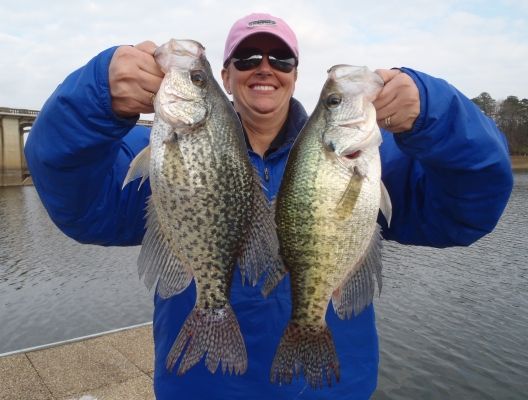
Click here to see what we're catching!
BIGUNS
There are two species of crappie:
Black Crappie (left) and White Crappie (right)

As you can see, the splotches on the Black Crappie are basically random with a slight horizontal pattern while the splotches on White Crappie are arranged in a very distinct vertical bar pattern.
To be certain you can count their dorsal spines - the rays in the top fin that are stiff and pointed on the end. Black Crappie have 7 or 8 dorsal spines and White Crappie have 5 or 6 dorsal spines.
As spawning time approaches the males of both species become much darker, sometimes almost completely black, as you can see here in comparison to the females.
Black Male (left) Black Female (right)
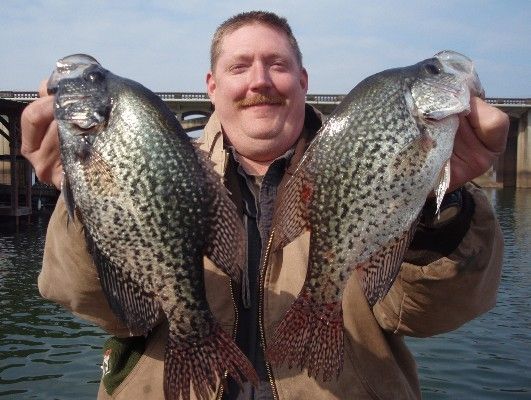
White Female (left) White Male (right)
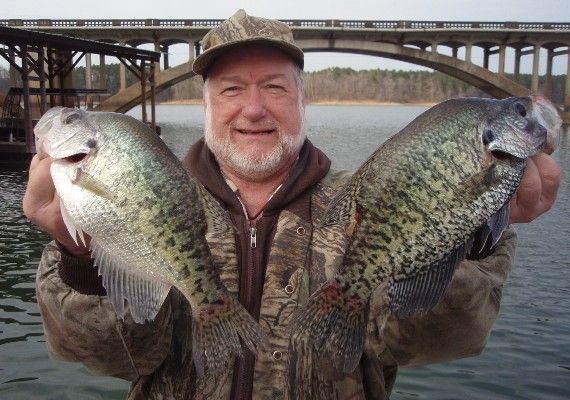
Some Black Crappie have a recessed gene that gives them a pronounced black or brown stripe from the tip of their top lip up to and sometimes onto their dorsal fin. Here they are referred to as Arkansas Blacknose Crappie.
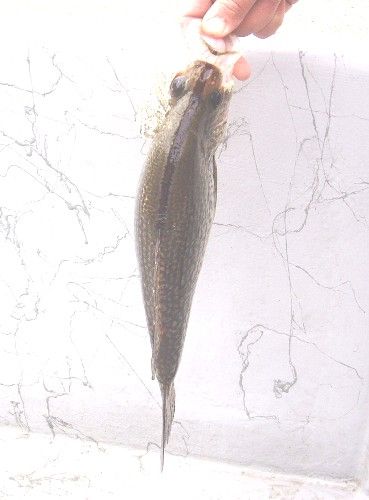
The stripe also appears under their bottom jaw. Blacknose Crappie are often used for stocking programs so Fisheries Biologists can tell which fish were likely stocked when they do their population surveys.
Crappie can cross-breed, which produces hybrids that have characteristics of both Black Crappie and White Crappie.
Black Crappie (left), Hybrid Crappie (center), White Crappie (right)
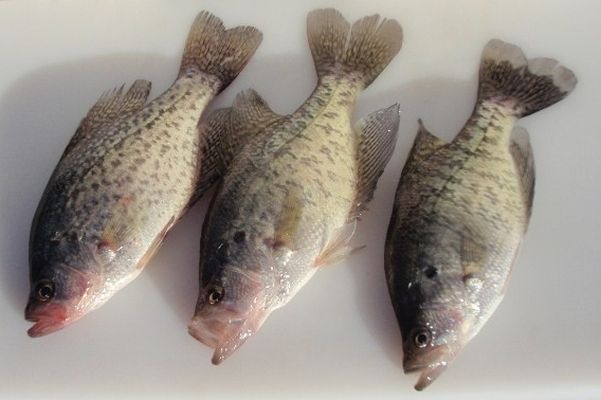
When a Blacknose Crappie and a White Crappie cross-breed the dark stripe apparently comes through on some of their offspring.
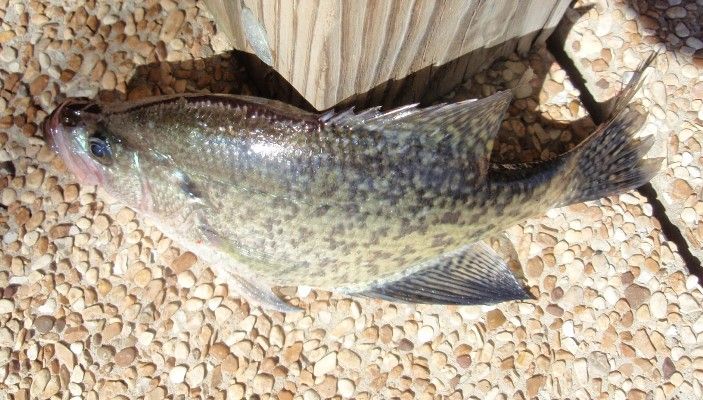
Crappie may not be the scrappiest of fighters but on light tackle they can be a handful, especially when they reach two pounds or more.
The average crappie we catch is about twelve inches and weighs about one pound, but we catch quite a few that are from fourteen to sixteen inches long and weigh from one and a half to two pounds.
Every now and then we catch crappie well over two pounds like this one that was 17.5 inches and 2 pounds, 6 ounces,
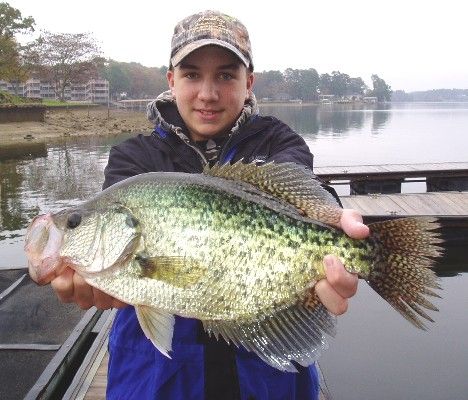
this one that was 18 inches and 2 pounds, 12 ounces,
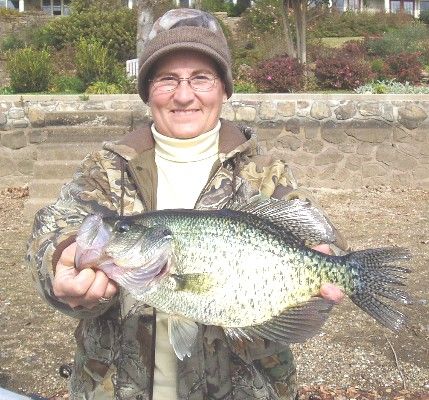
this one that was 18.5 inches and 2 pounds, 4 ounces,
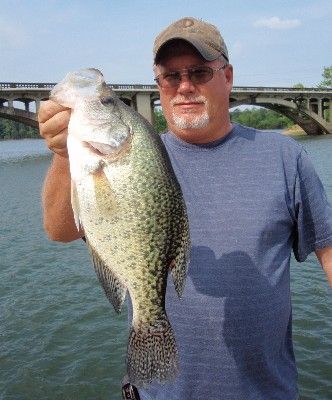
this one that was 17.5 inches and 2 pounds, 13 ounces,
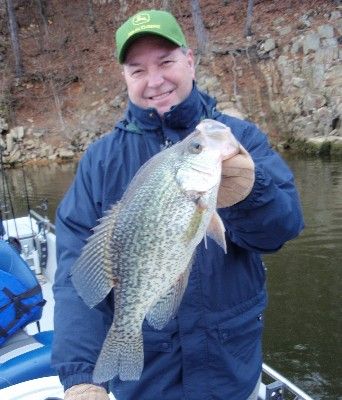
and this one that was 18.5 inches and 2 pounds, 5 ounces.
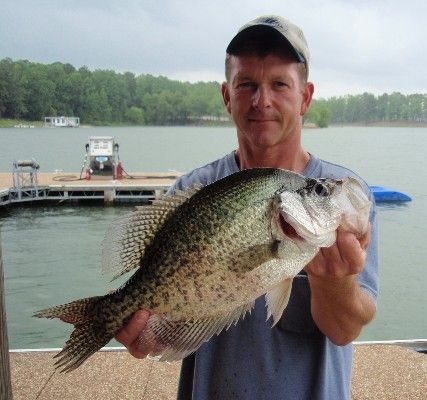
We've also had a few that have made the 3-pound mark like this 17.5-inch crappie that weighed exactly 3-pounds.
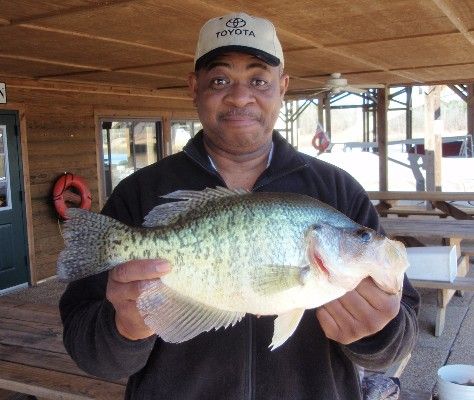
The challenges in crappie fishing are locating them, figuring out what they will bite and how they want it presented.
Once crappie are found and a pattern develops it doesn’t take long to catch enough for dinner and usually enough to share with friends and neighbors too.
At times crappie can be very aggressive and will hit almost anything presented in almost any fashion.
Other times crappie are rather finicky and their bite is so light and difficult to detect that you hardly get a chance to set the hook.
Crappie make possibly the best table fare of any fish species. Anyone that has tasted properly prepared crappie will attest to that.
Crappie can be prepared in many ways including fried, baked and in fish and seafood recipes. Click here for some of my favorite recipes.
Crappie are very prolific and grow quickly in our mild climate and long growing season.
Because they are so prolific and few fishermen pursue them year around, over-fishing of crappie rarely occurs, especially if they have adequate habitat.
Crappie adapt well to rivers, lakes and reservoirs and can be caught year-round if you know where and how to fish for them.